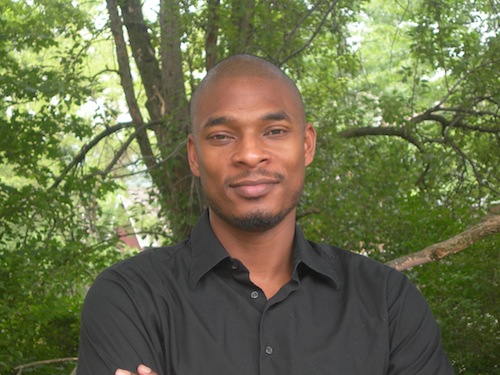Speculating Darkly, or The Folk Surreal Future (3 of 3)
BY Roger Reeves

[continued from part 1, and part 2]
AND WHAT DOES THIS HAVE TO DO WITH MAKING POEMS OR ART?
I’m sorry I just got distracted trying to figure out if Diddy, of “I created the remix” fame, was really dating Kate Upton. And then, there was the story about a komodo dragon in Indonesia biting an 83 year-old woman on the arm. Did you know Mark Zuckerberg and few other tech CEOs started a political lobbying group to petition for reformed policies on immigration and more funding for science in elementary schools? Who knew? Where was I?
That’s right, thinking through Terrance Hayes, the South, abjection, and art. Here we go. Though much of my argument concerning Hayes poem has been a cultural, socio-political argument, I think Hayes's meditation is as much about aesthetics as it is about politics and sociology. Let us think about the second section that quoted from, “SANCTUARY,” Here it is again:
[SANCTUARY]
In the far south where sap jewels the bark, the teeth
of the saws are sticky and bittersweet. But I wanted to carve
a door out of the wood, and around that door I wanted
to build a room, because I knew what my mother wished for
and I knew from far off what she would need.
In “SANCTUARY,” Hayes's speaker seeks to build a room, a sanctuary, for his mother. And if we remember our Italian, stanza means room or apartment. Thus, while Hayes's speaker might want to build a room for his mother, Hayes builds a meta-critical conversation about what it is to make a poem out of this southern wood, wood that carries both sweetness of its sap and a bite of the saw’s fury. Quite simply, the door that allows us into the space of the poem, which is a space of sanctuary, contains the contradiction and abjection of believing in ascension and the fear of climbing. In order to pass into the space of sanctuary, the space of solace one must open the door of abjection, the door of contradiction. In positing that one must pass through the door of disorder, Hayes subverts the traditional notion of sanctuary and helps me think through the possibility that sanctuary, the space of the poem, might be a place of unease. Let’s see if I can say that differently.
The space of the poem troubles rather than soothes. The space of the poem becomes the place of disorder and funk. The space of the poem embraces many traditions at once, often allowing them to contest each other in front of the reader. The poem becomes the space where poets explore the linguistic, social, and aesthetic imagination that lynching, slavery, and Jim Crow have created in an elegiac and non-elegiac fashion. Riffing on Toni Morrison’s William Massey lectures at Harvard, the poem becomes the place to play with (as in along with) the dark, to play with absence. The poem becomes the space wherein we confront the god that we once believe in and thrown stones at when he turns his or her back. The poem is the space of abjection. The poem becomes the space to love and hate Wallace Stevens. The same poem can be both Amiri Baraka and Bill Bojangles, a minstrel Malcolm X. I can’t help but think of Audre Lorde’s “Uses of the Erotic: The Erotic as Power.” Lorde argues for the fruitful contradictions of the poet revolutionary and the meditating gun-runner as a manifestation of erotic possibility. I believe Hayes continues this erotic possibility. But in Hayes, this contradiction is sanctuary. Sanctuary, the space of the poem, is not a place of adequacy but the space to explore adequate inadequacy. The poem is space of failure, contradiction, and abjection.
While this notion of the poem as the space to explore failure might not be new, I find Hayes articulation of it a little different from other articulations of the inadequacy of poetry and language because, in Hayes, failure has no value. Failure and abjection have their own ontological and epistemological complexity. Failure becomes part of field of relations rather than an articulation of inadequacy. I will stop here. For now.
Roger Reeves (he/him) is the author of Best Barbarian (W.W. Norton & Company, 2022), a finalist for ...
Read Full Biography

